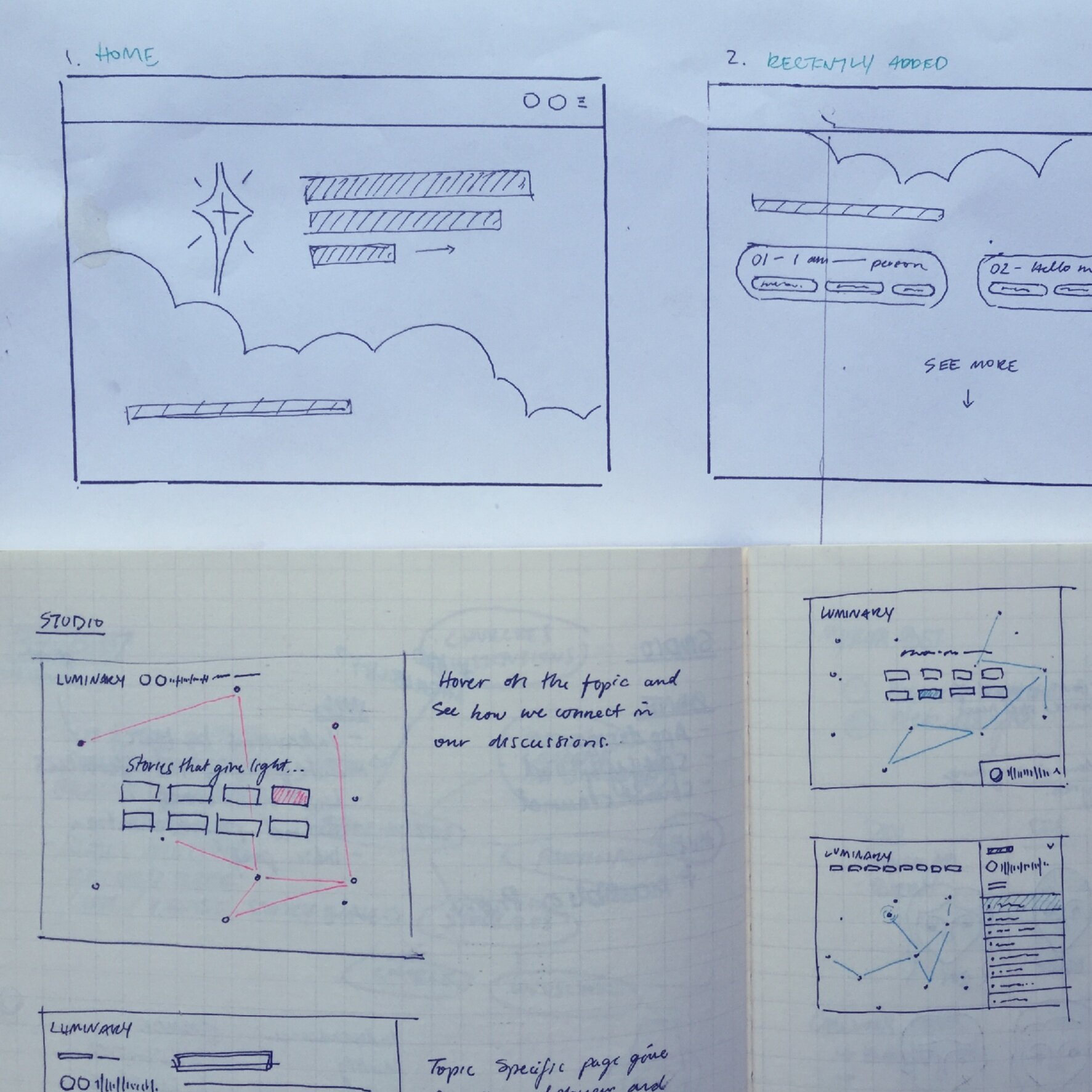
The Luminary
Encouraging Christian college students with stories that illuminate how God is present in our everyday challenges.
Spring 2018 | CMU School of Design Senior Capstone
Overview
For our senior capstone project, Jessie and I wanted to somehow incorporate our faith and design. We felt that thought our faith plays a big part of everyday lives, it doesn’t often make it into our everyday conversations. I wanted to create a space where people could share their stories, be vulnerable, and grow. A big part of this project was interacting with people and caring for their stories with respect and kindness. Through the process we aimed to break down barriers between those with different denominational backgrounds and also break down misconceptions about our faith. Hopefully the end result is something that is beautiful and encouraging.
Scope: Our focus for this project was Christian college students or recent graduates in Pittsburgh.
Goal: To collect stories about how a relationship with God impacts the college experience and produce them on an accessible platform. As a result, participants and listeners can be encouraged and help others share their own stories.
Team:
Natalie Harmon, Jessie Headrick
Roles:
Both Jessie and I were equally involved in the brainstorming and planning. I specifically owned the visual identity for the whole project.
The Luminary Components
Promotion materials
We created a video to explain our project and the importance of sharing our stories, and to recruit interviewees.
The podcast
We developed a conversation guide for the podcast episodes and edited them so that the stories could shine.
Website
We hosted all the episodes on a website and included materials for people to download in order to start their own conversations.
Introduction video
Illustrated by me and animated by Jessie, this was the video we used to tell other people about the importance of sharing faith stories and our goal for this project.
Conversation guide
To guide our interviews we asked three main questions.
What challenges did you face in college?
How did your faith help you through it?
In what ways have you changed and what did you learn?
Our conversation guide had a number of themes that we observed struggles to fall under. While people shared their stories we asked them to identify which themes were most relevant to them.
As a result, each person had a different “constellation” of topics that they talked about. When visualized you could quickly see everyone’s uniqueness and similarities.
Podcast
Below is our introduction episode and a quick reel done by myself of some podcast highlights.
Website
We hosted all the podcast episodes and conversation resources on a simple website that Jessie developed.
Process
Our overall process was focused around two main questions. First, how can we frame our project in a sensitive and approachable way? Second, how can we guide conversations to support a unified theme. For me specifically, I also wanted to try to find the best visual style that would fit our theme and would scale across all of our components.
Timeline - We broke our planning into four work streams: (1) developing our project identity (2) creating promotional materials (3) doing and recording the podcast interviews (4) and hosting everything on a microsite.
1. What metaphor can we use to frame our project?
From the beginning of the project we understood that in order to ask for participants to share their stories, we had to frame our project in a sensitive and approachable way. We looked at different metaphors to illustrate and ground our abstract topic of faith. Our goal was something that had potential for rich imagery and storytelling. Some of the options we explored, but didn’t use, were:
Quilt: Every person’s story is like a patch in a quilt, with God being the thread that connects us all
Camping: Following God is like traveling in the wilderness, with trails being the journeys that those ahead of us have already walked.
Landscape: Our stories are landmarks in the landscape of life and each of us experiences a different “geography”
Winning Metaphor: Light and Dark
We decided to use this metaphor, and wanted to play off the idea of illumination. We explain the metaphor in our framing video and used that piece as a way to develop our visual identity. Here are some sketches and final storyboard used to create the video. Jessie took my illustrations and animated them in After Effects.
2. How do we best guide our conversations?
We started the first interviews by just asking a set of questions. However, we found that this produced unfocused and varied conversations, so we designed topical cards. This way, the interviewee could self-direct the discussion using these cards. Each categories reflected a different area of life during college where a participant might face challenges. These would help use develop our final conversation guide.
To better lead the discussions as the interviewer, we mapped the conversations we already had and analyzed what framework might arise from this study. We discovered that successful and consistent episodes touched on these three things:
The experience: What happened?
Understanding: How did your values or understanding of the world play a part in how you got through this experience?
Transformation: What did you learn and how did you change through this experience?
3. Editing podcast episodes
We wanted our podcasts to sound professional so I arranged a musical interlude, and we spent some time recording in the school studios. We researched different tones to capture the identity of our podcast, and tested the variations against the content of our episodes.
It took a lot of time to take our often hour long conversations and edit them down to around 15 minutes.
4. Creating the website and style guide
Early website wire-frames explored interactive functions to search and discover stories that connect with one another. These search and filter feature interfaces reflected the metaphor of constellations. A major challenge along the way considering how one might interact with the audio on the site.
Using the colors from the framing video, we made a quick style guide to document our thinking, which then guided our website work.
Sharing our stories
At the end of the day, this project was very personal and rewarding. We were able to share about how our faith was important to us and bring people together. Everyone’s stories were so encouraging, and hopefully we shared them in an uplifting and honoring way. In a way, the design of this project was less important than the words that were spoken and relationship that were formed. I know at least for myself that I came away feeling less lonely in my faith journey and encourage by how God has been working in each of our lives.







